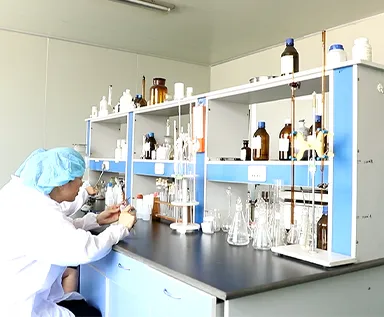serum tubes
Understanding Serum Tubes A Vital Component in Clinical Diagnostics
In modern clinical laboratories, serum tubes play a crucial role in the collection, preservation, and analysis of blood samples. These specialized containers are designed to facilitate serum separation, enabling clinicians to obtain valuable diagnostic information from blood analyses. This article delves into the significance of serum tubes, their construction, types, applications, and best practices for their use in medical diagnostics.
What are Serum Tubes?
Serum tubes are blood collection tubes that have a clotting agent and are typically used to collect venous blood samples for serum testing. Once blood is drawn into a serum tube, it is allowed to clot before being centrifuged. The centrifugation process separates the liquid serum from the cellular components of the blood, allowing for accurate diagnostic testing. The serum contains a wealth of biochemical information, including enzymes, hormones, and other substances critical for evaluating patient health.
Types of Serum Tubes
There are various types of serum tubes, each designed for specific analytes and testing methodologies. Common types include
1. Plain Serum Tubes These tubes contain no additive and are often red or clear. They are used for tests where serum is required, and no anticoagulant is needed.
2. Serum Separator Tubes (SST) These tubes contain a gel barrier that separates the serum from the cellular components during centrifugation. SST tubes are typically gold or tiger-striped and are widely used because of their convenience in handling.
3. Clot Activator Tubes These tubes have a coating that promotes clotting, making them ideal for biochemical tests where serum is required.
Each type of serum tube may come with specific specifications, including the volume of blood it can hold and the time required for clotting, which are important considerations for obtaining accurate results.
Applications in Diagnostics
The ability to analyze serum samples is foundational for many diagnostic tests. Serum tubes are utilized in various clinical domains, such as
- Routine Biochemistry Such tests measure various substances in the serum, including electrolytes, glucose, and liver enzymes, providing valuable insights into metabolic functions and organ health.
serum tubes

- Serology Serum samples are crucial for serological tests that detect antibodies or antigens, helping diagnose infectious diseases, autoimmune disorders, and allergies.
- Hormonal Assessments Hormone levels in serum can be indicative of endocrine dysfunction. Serum tubes are essential for tests measuring thyroid hormones, adrenal hormones, and reproductive hormones.
- Clinical Trials and Research Serum samples collected in serum tubes are used in medical research studies to investigate various health conditions and therapeutic interventions.
Best Practices for Use
To ensure the integrity of the serum samples collected in serum tubes and the accuracy of the test results, several best practices should be followed
1. Proper Identification Each serum tube should be properly labeled with patient information, collection date, and time to prevent mix-ups and ensure traceability.
2. Correct Technique Blood should be drawn using an aseptic technique, and the appropriate serum tube should be chosen for the specific tests required.
3. Centrifugation Protocol Adhering to recommended centrifugation speeds and times is critical to achieving effective separation of serum from blood cells.
4. Temperature Management Serum samples should be stored and transported at the appropriate temperatures to prevent degradation of analytes.
5. Timely Processing Samples should be processed as soon as possible after collection to minimize the risk of hemolysis and other factors that could compromise results.
Conclusion
In summary, serum tubes are indispensable tools in the realm of clinical diagnostics. They enable the efficient collection and separation of serum from blood, facilitating a wide range of diagnostic tests that are crucial for patient care. Understanding the different types of serum tubes, their applications, and best practices ensures the highest quality of laboratory results, ultimately contributing to better health outcomes for patients. As technology and methodologies continue to advance, the role of serum tubes in diagnostics will remain vital in the ongoing pursuit of precision medicine.
-
Aesthetic Makeup Spray Bottles | Fine Mist Empty RefillableNewsAug.19,2025
-
White Plastic Veterinary Vaccine Vials | Lab Liquid BottlesNewsAug.18,2025
-
Plastic Medicine Liquid Bottle: Secure Flip Top Drug VialsNewsAug.17,2025
-
Durable 250ml Blue Plastic Vaccine Vial for Lab & Vet UseNewsAug.16,2025
-
Sterile Virus Sample Tubes: Secure & Reliable Specimen CollectionNewsAug.15,2025
-
White 250ml Plastic Vaccine Vial for Lab & Vet MedicineNewsAug.14,2025
























